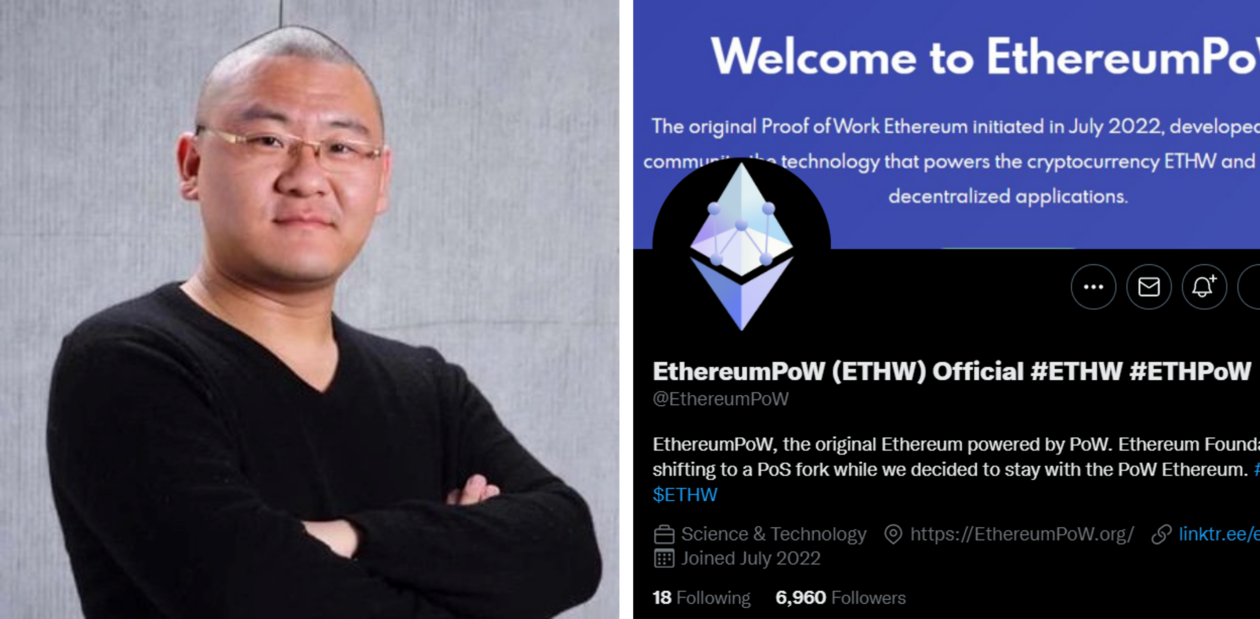The so-called Merge of the Ethereum network is one of the most expected events in the history of blockchain.
“The Merge” intends to shift the Ethereum blockchain from its current proof-of-work (PoW) mechanism to a proof-of-stake (PoS) model, which is regarded as faster, uses less energy, offers more security, and is better for scaling projects. It’s expected to happen on Sept. 15 or 16.
However, Chandler Guo – a former cryptocurrency miner in China who has spoken on blockchain at the World Economic Forum in Davos – says the Merge offers benefits, but it will also wreck the business of miners who depend on the PoW model to earn Ether cryptocurrency.
“Many miners would have to shut down their businesses [after the merge],” Guo said, adding that mining facilities and the sophisticated computer hardware are hard to put to use for other purposes.
While Guo quit crypto mining in 2016 – he now lives in Silicon Valley and helps run angel blockchain investor AU21 Capital – he’s suggested doing something about that problem for miners.
Late last month, Guo, who has over 35,600 Twitter followers, said he will start forking the Ethereum network — and formed a community knows as “ETHW” — to maintain a version that remains PoW. He said he has brought 60 volunteer developers on board and is looking at how to generate funds to run the servers to build the network.
Guo’s plan has its skeptics. Analysts at crypto investment firm Grayscale wrote on Monday that the EthereumPoW fork will likely “face significant challenges due to the complexity of DeFi (decentralized finance) and proliferation of asset-backed tokens.”
The following interview has been translated from Chinese and edited for language and brevity.
Ningwei Qin: How is progress so far? Who is participating in developing and testing the fork?
Guo: A testnet is now live and we’ve open-sourced the code. We’re in touch with more mining pools, crypto exchanges, wallet providers and security firms on Twitter or via emails to invite them to participate in testing.
There’s only a month left until the Merge, and we are working together to spot security loopholes in our code. The code is not very different from the current mechanism and retains the use of EIP-1559 and the PoW mining model.
We’re currently in touch with large mining pools. We’ve also tagged smaller mining pools on Twitter to request them to test the code.
Miners are our biggest supporters, but they don’t typically participate in developing the code. They mostly just put their computing power at mining pools and have mining pools handle the fork. That means mining pools are the major driving force for EthereumPoW.
Our team of developers are mainly in the U.S., with just a few in mainland China. Many of them find PoW meaningful and hope to leave a mark on history. Many of them are strong Bitcoin believers.
But these developers are contributing on a voluntary basis, which means lower efficiency. We’re hoping to engage more people to co-develop now that we open-sourced the code.
Qin: What prompted you to start and lead the fork?
Guo: We only started in early August, so it’s not been long, but things are moving fast. All of this started at a miners’ party I hosted at my house [in the U.S.], where many miners said the transition from PoW is approaching and they hoped I could help them. They don’t know much about the fork or running a community, while they will soon have to shut down mining machines.
Therefore, I asked around and found the merger could lead to many miners losing their businesses, and some of them without covering their costs. Miners have poured money in mining facilities, equipment and personnel. Mining facilities are different from building regular plants. Mining farms can hardly be transferred for other purposes.
I stopped mining at the end of 2016, but I’m aware that this is a looming matter, so I proposed a fork.
Qin: What are the pressing issues you’re facing now?
Guo: Since this project is a decentralized project without a foundation, one of the major questions is who will bear the cost of operation of so many servers in the network? The miners, mining pools or the Ethereum Foundation?
The Ethereum Foundation will not contribute, so we are left to ourselves. Our solution was to re-enable the burned ETH. The EIP-1599 upgrade is a mechanism to burn miners’ due earnings. Therefore, our current fork plan is to modify EIP1559 to enable the proceeds that should be destroyed to a new address and distribute them to miners and mining pools, who will use these funds to establish nodes.
The most discussed topic recently is how the benefits of upgrading by tweaking EIP- 1559 should be split between miners and mining pools. It will take a long time for everyone to understand that building a forked network requires high costs. A fork is not a project that can be started from scratch with just one server – at the very beginning of Ethereum, ten servers were enough, but now 200 servers are not enough for our project. We currently need to have a large number of servers to carry all these users and transaction volumes. Otherwise, there will be congestion in the transmission.
The most discussed topic in the English communities now is how to distribute the coins to the mining pool. The plan has not been revealed. We will solicit opinions and then make a general proposal, and then finally everyone will discuss it.
In addition, behind this fork also lies in the fact that the ecosystem on Ethereum has become a lot more complicated. There was no ERC-20 token, no NFT and no ecosystem in the previous fork. In addition, the number of users of Ethereum is now much larger than that of the last fork. With more than 200 million active users and 10 million addresses on the entire Ethereum, everyone will pay attention to where their assets will go.






